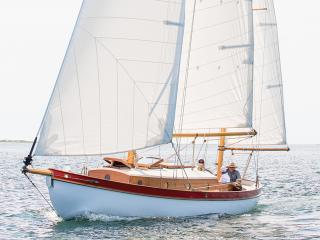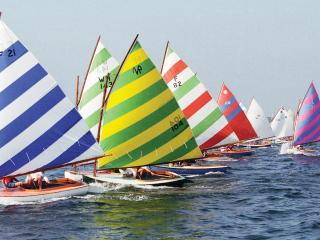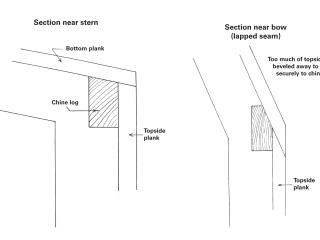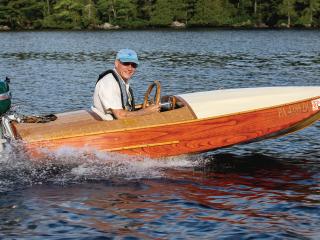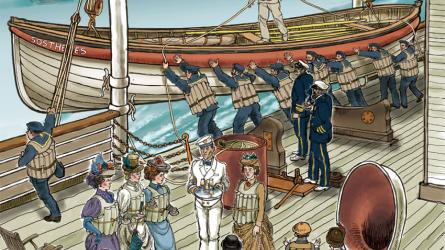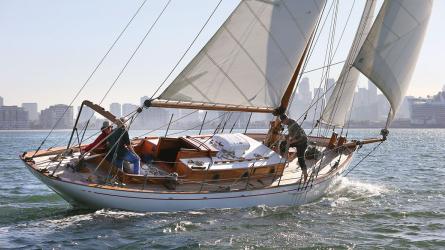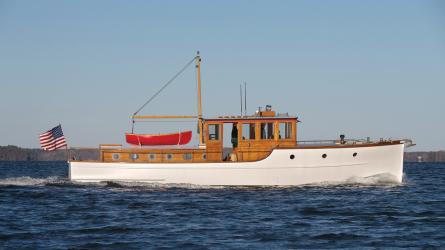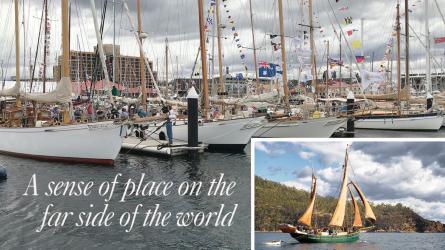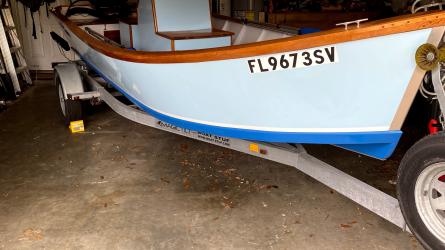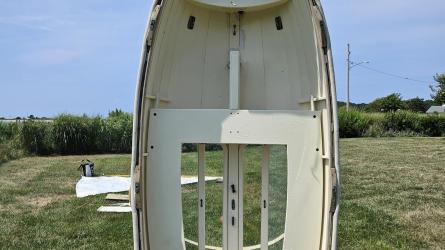September / October 2020
The Legacy of Bill Orchard
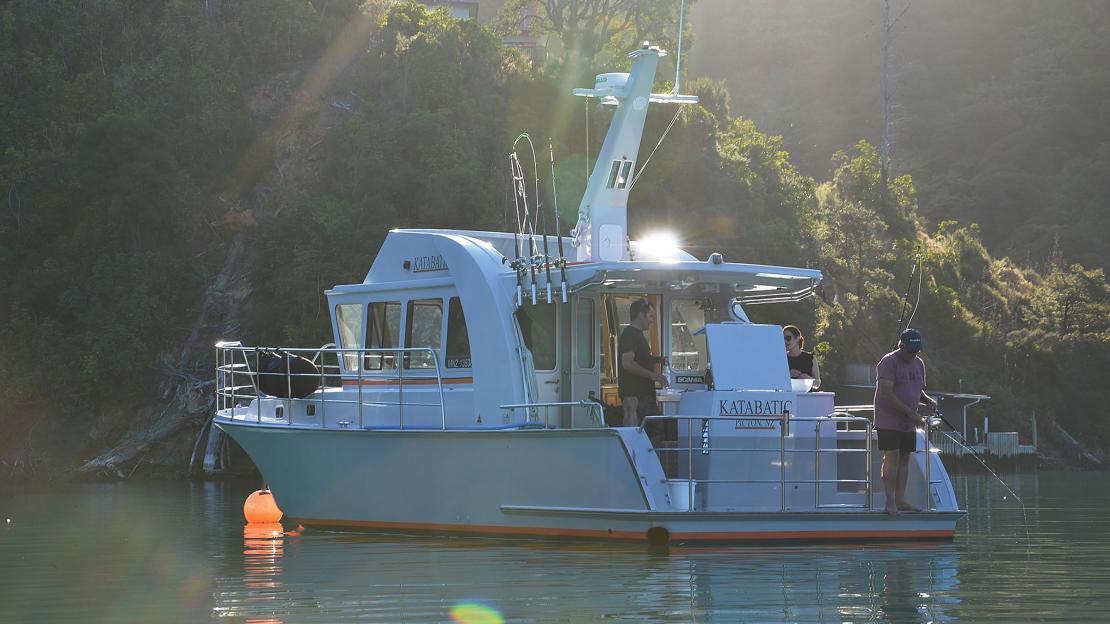
The charter vessel KATABATIC, which measures just slightly over 42’ (13m) on deck, explores the Marlborough Sound region of New Zealand’s South Island with up to 16 passengers. She is part of a long legacy of boatbuilding in her region.
The Marlborough Sounds region encompasses a series of sparsely populated drowned valleys at the northern tip of New Zealand’s South Island. The steep-sided, forested ridges that separate each sound from the next reach out like fingers across turbulent Cook Strait toward the smaller, more populous North Island.
This region has always looked to the sea for its livelihood, its few settlers relying on water transport to get around. There is little road access to Queen Charlotte Sound, one of the larger ones in the region, so residents there have typically conducted their business by water. Reaching the isolated houses and cabins scattered around the inlets and bays of this deeply indented coastline is often quicker and easier by boat than by road. Boats are part of the fabric of life in this part of New Zealand, essential for the transport of people, animals, and goods between isolated settlements.
Grant Orchard’s family is an institution in Marlborough Sounds, earlier generations of the family having manned mailboats and ferries servicing nearby Pelorus and Keneperu Sounds. Grant belongs to the fourth generation of Orchard watermen, continuing the family’s owner-operator tradition with his own vessel, KATABATIC, by providing scenic and adventure tours.
To read the rest of this article:
Click the button below to log into your Digital Issue Access account.
No digital access? Subscribe or upgrade to a WoodenBoat Digital Subscription and finish reading this article as well as every article we have published for the past 50-years.
ACCESS TO EXPERIENCE
2-for-1 Print & Digital Subscription Offer
For this holiday season, WoodenBoat is offering our best buy one, get one deal ever. Subscribe with a print & digital subscription for $42.95, and we’ll give you a FREE GIFT SUBSCRIPTION to share with someone special.
1 YEAR SUBSCRIPTION (6 ISSUES)
PLUS ACCESS TO MORE THAN 300 DIGITAL BACK ISSUES
PRINT+DIGITAL $42.95
Subscribe
To read articles from previous issues, you can purchase the issue at The WoodenBoat Store link below.
 Purchase this issue from
Purchase this issue from
